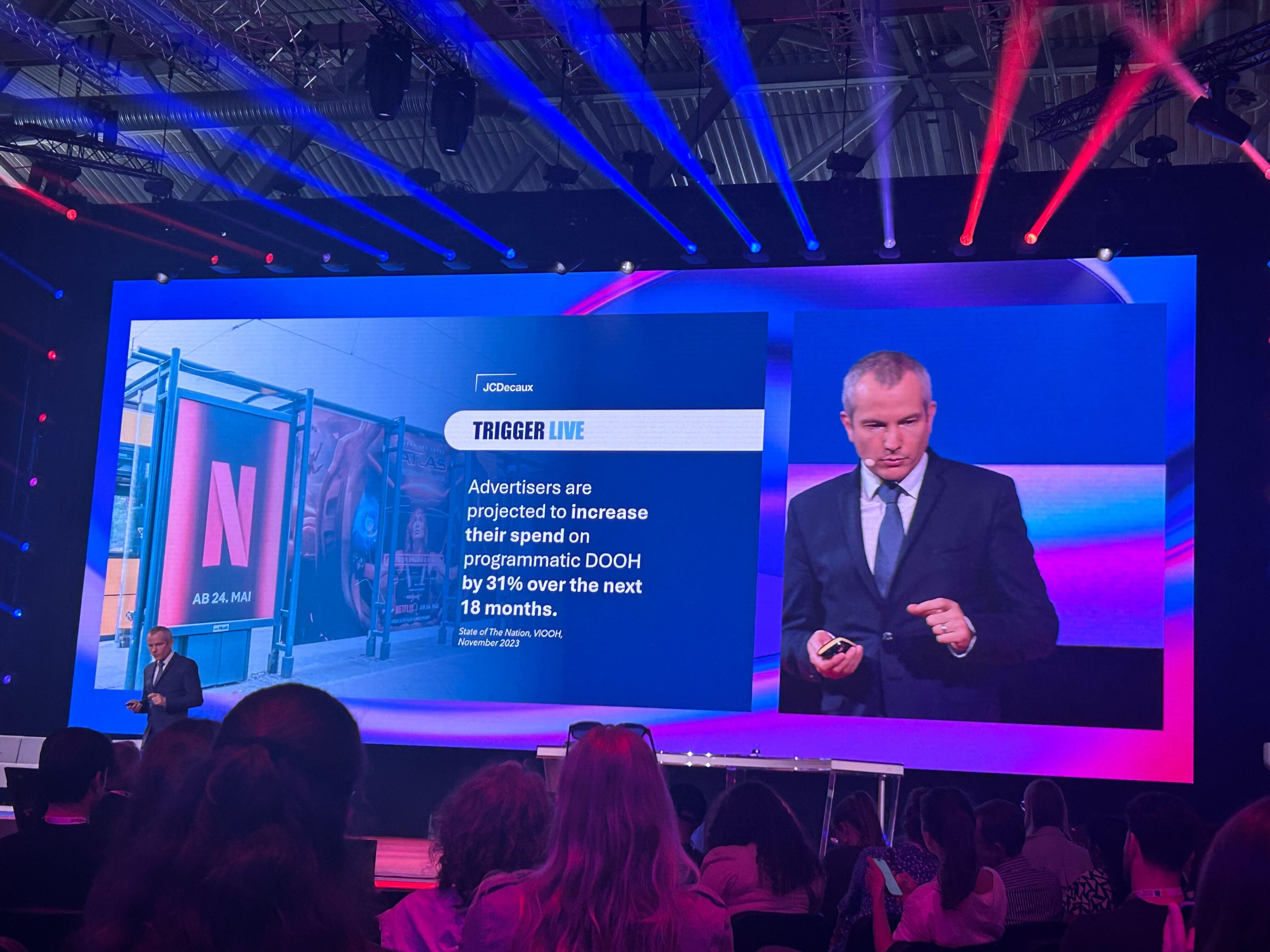
3 minute read | October 10, 2024
Programmatic's next frontier: DOOH and CTV insights from DMEXCO
Written By: Diu Hoang
At this year's DMEXCO conference, I was struck by the myriad of both challenges and opportunities that permeates our industry. We're navigating significant changes in data privacy and consumer expectations, but we're also witnessing exciting developments in areas like connected TV (CTV), artificial intelligence (AI) and programmatic digital out of home (prDOOH).
The conference reinforced for me that success in this evolving landscape will require a combination of technical innovation, creative excellence and a steadfast commitment to respecting consumer privacy.
Privacy-first advertising
One of the overarching themes that resonated throughout the conference was the industry's response to the impending deprecation of third-party cookies. While Google has recently walked back on their timeline, there's a collective understanding that reliance on cookies is not a long-term solution. As an industry, we're being challenged to forge ahead and develop alternative targeting methods using data and new forms of identifiers.
In a particularly insightful session on privacy-first advertising, Jonas Rashedi ( Director Data Intelligence & Technologies, Douglas) and Dirk Rohweder (Co-Founder, Teavaro Group) discussed the critical need for reaching a sufficient audience mass in a world with increasing privacy constraints. They emphasised the importance of having the right identifiers to reach customers and the need to activate first-party data with proper permissions. The conversation highlighted the growing dependence on walled gardens and third-party solutions, as well as the potential of omnichannel approaches in gathering and activating data across all channels.
Programmatic advertising growth
The conference also shed light on the rapid growth of programmatic advertising in Europe. The IAB Europe's 2023 AdEx Benchmark Report, presented by Daniel Knapp, provided affirming statistics about the expansion of programmatic across various channels. A subsequent panel discussion revealed that agencies see DOOH as a significant growth area for programmatic investment. The ability to discover new audiences was cited as a key driver for advertisers, while cost efficiencies were highlighted as the primary motivation for agencies.
The power of creativity in advertising was another recurring theme. Diederick Ubels from Vistar Media gave an engaging presentation on the creative impact of prDOOH advertising. He showcased how prDOOH enables flexibility, reactivity, and the use of dynamic creative optimisation (DCO) to deliver contextually relevant ads. The session reinforced that while programmatic provides the infrastructure for scalability, creativity remains king in advertising effectiveness.
The conference also touched on the challenges facing the industry. Quality of media was identified as the biggest barrier for all stakeholders, with concerns about fraud, brand safety, viewability and transparency, which was interesting to me as someone who works in the programmatic DOOH space where these are largely non-issues (prDOOH being one of the most brand-safe and fraud-free media channels out there). The fragmented nature of programmatic advertising was also discussed, with speakers emphasising the need for a more holistic view of campaign performance and improved data interpretation capabilities.
The appeal of connected TV
Looking ahead, several speakers shared their views on priority growth areas for the next 6-12 months. CTV was consistently mentioned as a major focus, with advertisers increasingly seeking 360-degree campaigns.
Microsoft's representative emphasised the importance of omni-channel solutions, suggesting that audiences should dictate the channel rather than advertisers. Deutsche Telekom highlighted both CTV and AI as key areas of development, not just in terms of generative AI but AI applications across the board.
The power of attention and visual communication
Sylvain Le Borgne from JCDecaux delivered a compelling talk on the concept of attention in OOH advertising. In an era where consumers are overloaded with ads, Le Borgne stressed the importance of creating specific connections with consumers through attention-grabbing experiences, nurturing attention for a longer-term goal instead of just a quick, momentary attention-grab. He outlined an operational framework for OOH that considers location, frequency, creativity and context, demonstrating how these elements can be leveraged to capture and maintain audience attention.
One of the most practical sessions I attended was Canva's presentation on visual communication. While primarily focused on empowering businesses to harness their design power, many of the insights were highly relevant to the DOOH industry. The speakers highlighted how visual content is 40 times more likely to be shared and remembered, and how combining visuals with text can triple engagement rates. In an age where attention has become a commodity, these insights underscore the importance of compelling visual design in DOOH campaigns. Creativity is still king.
Moving forward, it's clear that we need to focus on developing privacy-first data solutions, enhancing our capabilities in areas like CTV and AI, and continually refining our approach to capturing and maintaining consumer attention. As we do so, we must keep the user at the centre of all our discussions and decisions.
After all, it's only by truly understanding and respecting our audience that we can hope to create advertising experiences that are both effective and welcomed.
Diu Hoang is Global Field Marketing Director at VIOOH. For more information visit: viooh.com
Other posts you might be interested in
View All PostsSign up to receive our newsletter
Stay in the loop and find out what's happening in the world of digital OOH.
